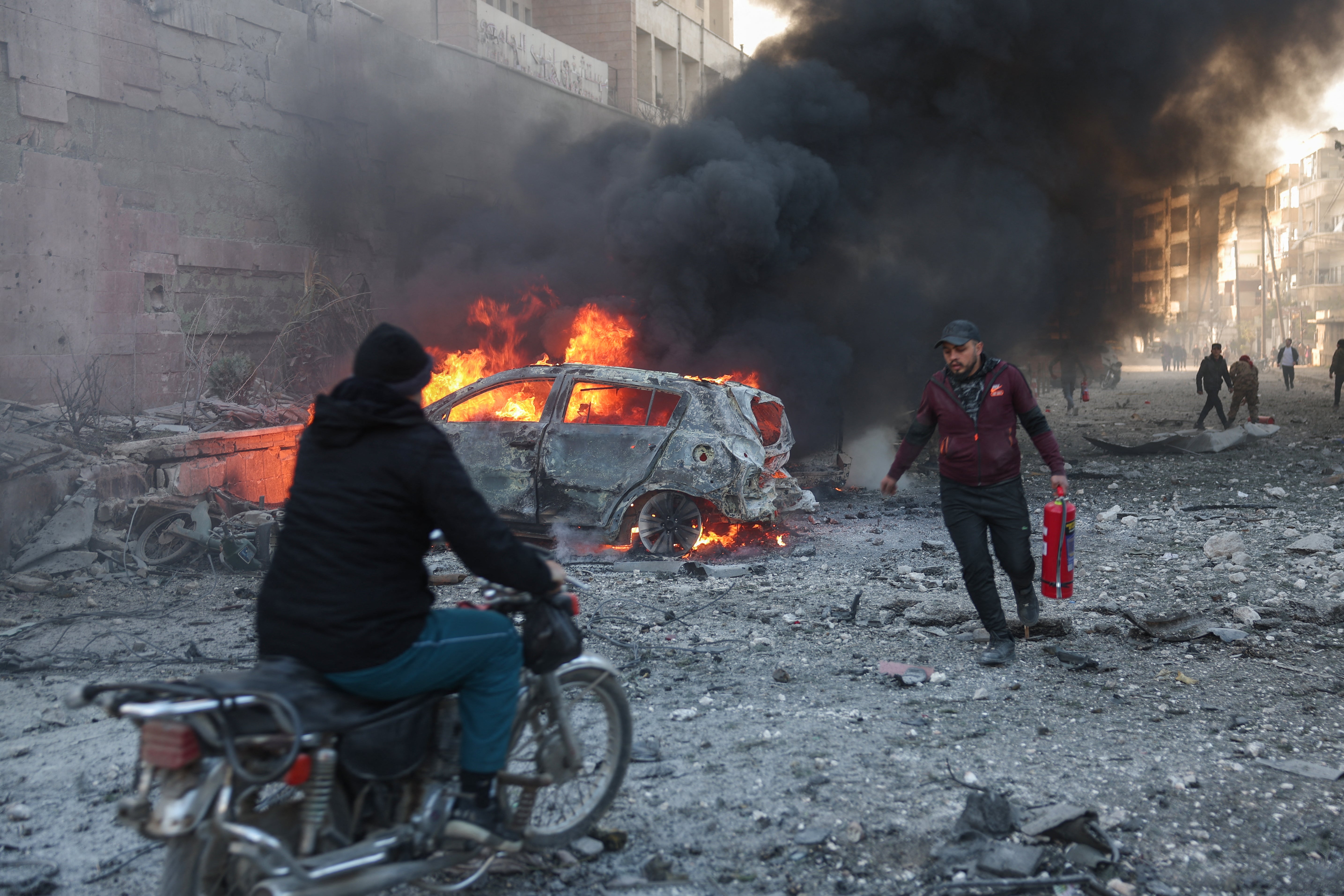How Bashar al-Assad went from London doctor to Syria’s monstrous dictator
As Syrian rebels bring an end to the Assad family’s 50-year reign in Syria, Donald Macintyre looks at the man behind 12 years of civil war and bloodshed

It’s a safe bet that Bashar al-Assad will be judged by future historians to be among a handful of the most monstrous and murderous of 21st-century dictators. Yet it’s not impossible that had it not been for the car accident that killed his older brother Basel in 1994, this allegedly introverted person might have been today still working quietly as an ophthalmologist in London instead of being responsible for the deaths of at least 200,000 of his fellow Syrians.
It was then, while he was doing his postgraduate medical studies at the Western Eye Hospital, that Bashar was recalled by his father Hafez Al-Assad, the Baathist ruler of Syria, to be groomed as his successor.
When Bashar was “elected” as president on his father’s death in 2000, some Western leaders cherished hopes that he would usher in an era of democratic and economic reform. Among these was Tony Blair, who hoped for a new relationship with the young Syrian president, a fluent English speaker.
Assad talked the talk of liberalisation. Even in 2002, when the UK and US were gearing up for war with Iraq, which Assad opposed, the British prime minister, while acknowledging their differences, said after meeting Assad in London that “a process of engagement with Syria is the right way forward”.
In fact, Assad, whose family was part of the Alawite sub-sect of Shia Islam, which had dominated Syria since the 1960s despite representing only 10 per cent of the country’s Sunni-majority population, quite swiftly proved to be every bit as autocratic as his father, if not even more so.
Any promotion of economic liberalisation largely benefited a rich Syrian elite. After Lebanon’s prime minister Rafic Hariri was assassinated in 2005, apparently by Hezbollah, a UN investigation suggested that Syria might have had a hand in the murder, though without conclusive evidence.
Either way, after Western pressure and a large-scale revolt within Lebanon, Assad was obliged to remove Syrian troops who had been stationed there since 1976. Inside Syria, one of the region’s most effective intelligence services was a bastion against internal dissent.
In 2011, Assad faced his first serious internal challenge from anti-government demonstrations partly inspired by the wave of protests erupting especially in Tunisia and Egypt. By 2021, Assad’s attempts to repress the protests with increasing ferocity caused the demonstrations to erupt into a full-scale civil war.

With Turkey and Qatar among those seeking to fund and arm rebel forces, Assad relied on support from Iran and Hezbollah, which sent fighters to augment Syrian armed forces. In 2015, however, he was able to secure the most powerful backing of all: military forces from Russia, which had long provided him with arms.
Assad gradually managed to save his regime – at least until the latest surprise advance by Hayat Tahrir al-Sham (HTS) – at the expense of Syria and Syrian society. When he was not using chemical weapons, he authorised the serial deployment of “barrel bombs”, which caused widespread civilian casualties.

When he was accused by the West of the first major chemical weapons attack of the war – which caused mass deaths in Damascus – both the US and the UK did not accede to widespread calls for military action against Syria.
As the war wore on, Western efforts to unseat – or at least restrain – his regime were complicated by what they saw as the need to focus on the threat posed by the most jihadist of his opponents.
By mid-2018, Assad was largely in control of most of the country; a notable exception was the northwestern area bordering Turkey from which the rebels staged their successful march on Aleppo last week.

Characteristically, as the war was abating in much of the country, Assad passed a draconian law enabling the state to claim the property of Syrians who fled the conflict.
Now he has fled, bringing a dramatic close to his nearly 14-year struggle to hold onto control as his country fragmented in a brutal civil war that became a proxy battlefield for regional and international powers.
As daylight broke over Damascus, crowds gathered to pray in the city’s mosques and to celebrate in the squares, chanting, “God is great.” People also chanted anti-Assad slogans and honked car horns.
Syrians stormed Assad’s presidential palace in the suburbs as rebels proudly shouted the country was “free from the tyrant”.





Join our commenting forum
Join thought-provoking conversations, follow other Independent readers and see their replies
Comments